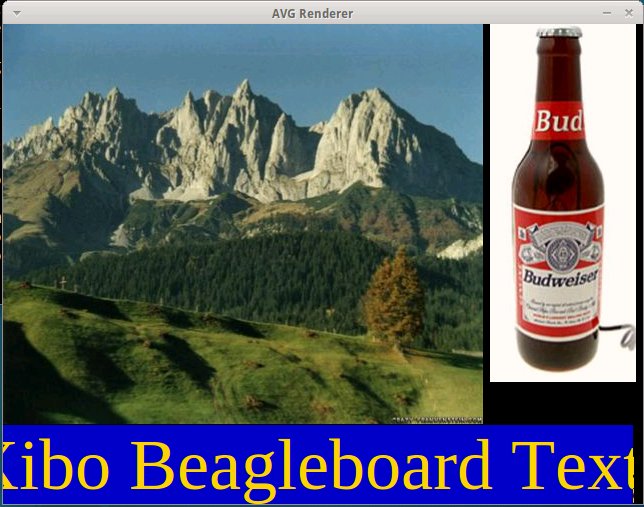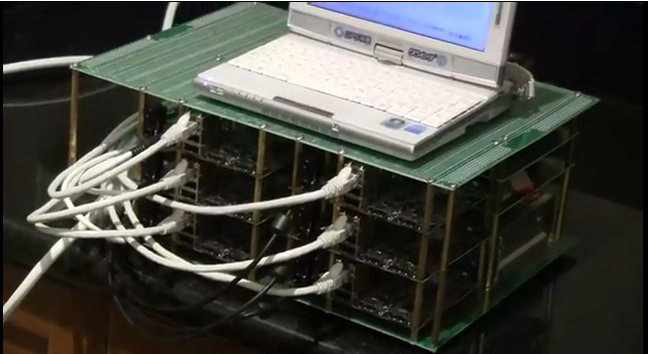Presentation entitled “Developing Embedded Linux Devices Using the Yocto Project and What’s new in 1.1” by David Stewart, Intel, at Embedded Linux Conference Europe 2011. Abstract: The Yocto Project is a joint project to unify the world’s efforts around embedded Linux and to make Linux the best choice for embedded designs. The Yocto Project is an open source starting point for embedded Linux development which contains tools, templates, methods and actual working code to get started with an embedded device project. In addition, the Yocto Project includes Eclipse plug-ins to assist the developer. This talk gives a walk-through of the key parts of the Yocto Project for developing embedded Linux projects. In addition, features are described from the latest release of Yocto (1.1). At the end of the talk, developers should be able to start their own embedded project using the Yocto Project and use it for developing the next […]
The Linux NFC Subsystem – ELCE 2011
Lauro Ramos Venancio, Instituto Nokia de Tecnologia and Samuel Ortiz, Intel give a presentation about the NFC subsystem in Linux at Embedded Linux Conference Europe 2011. Abstract: NFC (Near Field Communication) is a wireless protocol mostly designed for fast information reading and writing from nearby devices and tags. It also allows NFC devices to establish a transport layer link and exchange larger chunks of data. While Android ships with its own multi platform NFC stack writing HCI frames to a raw character device and supporting one single device, Linux is currently missing any kind of generic and clean NFC support, from both kernel and user space (cnxsoft: Since end of last month, this is not the case as Linux 3.1 supports NFC). Therefore, a new socket family for NFC, along with a kernel netlink API for high level NFC commands passing is being developed. An NFC user space daemon abstracts […]
Board Bringup: LCD and Display Interfaces – ELCE 2011
Presentation “Board Bringup: LCD and Display Interfaces” by David Anders, Texas Instruments, at Embedded Linux Conference Europe 2011. Board bringup is one of the most under documented aspects of embedded development. This presentation looked at the various display technologies such as DisplayPort, DVI, LVDS, and other LCD interfacing methods with emphasis on how to bringup, debug, and validate them on new hardware. Using a case study, aspects such as interfacing timing, extended display identification data(EDID), and backlight controls have been discussed. Most embedded linux developers at some point in their career will be handed a piece of hardware that is untested. LCD bringup is one of the most challenging assignments for an embedded developer. This presentation intends to provide some core tools and methods for bringup of a new display interface. You can also download the presentation slides Jean-Luc Aufranc (CNXSoft)Jean-Luc started CNX Software in 2010 as a part-time endeavor, […]
LinuxCon Europe 2011 Keynote: Imagine a World Without Linux
Free-electronics has made 51 videos of Embedded Linux Conference Europe 2011 available at http://free-electrons.com/blog/elce-2011-videos/ in webM format that you’ll need to download. I’ll upload a few to Youtube to them more accessible. The fist video is the keynote by Jim Zemlin, Executive Director of The Linux Foundation entitled “Imagine a world without Linux”. During this keynote, Jim thinks about a world without Linux and wonders where your Internet search, your social networking company, you mobile phone os, your ecommerce provider would be without it. He also talks about the critical moments that contributed to the foundation of Linux and its establishment as the underpinning of so much of our economy and culture. Jean-Luc Aufranc (CNXSoft)Jean-Luc started CNX Software in 2010 as a part-time endeavor, before quitting his job as a software engineering manager, and starting to write daily news, and reviews full time later in 2011. www.cnx-software.com
Ubuntu Linaro Evaluation Builds (LEB) Tutorial
Ricardo Salveti, tech lead of the Developer Platform working group, gave a tutorial on the Ubuntu Linaro Evaluation Builds (LEBs) during Linaro Connect Q4.11. He first described the list of available images: nano – minimal rootfs (command line) with apt/dkpg support ALIP – nano + X11 + browser Developer – nano + development tools Ubuntu Desktop – clone of Ubuntu with Linaro modifications. and how the builds are made available via nightly builds and hardware packs. Linaro aims at making Ubuntu the reference Linux distribution for ARM. This goal is valid for Cortex A processors, but for older ARM core (ARM9/ARM11) other distributions will have to used such as Debian. For example, Raspberry Pi board (ARM1176) will support Fedora optimized by Redhat. He then gave further details on Offspring the Linaro build system based on live-build scripts used for Debian. The source code is retrieved either via git (http:/git.linaro.org) or launchpad […]
Linaro 11.10 Release with Linux Kernel 3.1
Linaro has just released version 11.10 based on Linux Kernel 3.1. Here are the highlights of the release: Android Audio playback and recording works on LEB-panda. TJBench into all Android builds benchmarked against the original Android libjpeg implementation: TomGall/LibJpegTurbo All strict-aliasing violations in 2.3.5 have been fixed and sent to AOSP. (for build optimization) Linaro Gerrit is integrated with Android Build Service for change verification as part of Continuous Integration effort. Tip toolchain tracked and released against all targets for 11.10. iMX53 will now boot with a 3.0 or later Android Kernel. The multimedia test application has been extended to cover encoding and give better benchmark results. Linaro’s Android distribution can now base builds off a tip toolchain build. Linaro’s 11.09 toolchain has been benchmarked. USB camera (UVC) now works on linaro-android builds. Developer Platform The Linux Linaro packages are now generated and validated in a continuous integration loop. New […]
Xibo Digital Signage on ARM (Full Version)
Last month, I wrote a post showing how to run Xibo Open Source Digital Signage in a BeagleBoard/Overo emulator. That version could communicate with Xibo server, download the required files, display pictures and (maybe) play videos with the real hardware. However, it had serious limitation as Text, RSS and web pages could not be displayed. I’ve now fixed those issues and the full Xibo 1.3.1 can run on ARM platform. First, you need to follow the instructions given in Xibo Digital Signage on ARM (Beagleboard / Overo), although we’ll need to modify something with libavg compilation (see below). Then cross-compile berkelium for ARM using Linaro toolchain. Add libbrowser-node to libavg plugin directory and build libavg again. Also copy the Berkelium header files in to src/test/plugin (i.e. src/test/plugin/berkelium) or add the include file path to CFLAGS/CXXFLAGS.
|
1 2 3 4 5 |
bzr branch lp:~browsernode-team/+junk/berkelium-browsernode cp berkelium-browsernode/plugin/* ~/edev/beagleboard/libavg-1.6.0/src/test/plugin cd ~/edev/beagleboard/libavg-1.6.0 make make install |
Create libberkeliumwrapper.so:
|
1 2 3 4 |
cd ~/edev/beagleboard/libs/lib touch a.cpp arm-linux-gnueabi-g++ -c a.cpp -o a.o arm-linux-gnueabi-g++ a.o -shared -L/home/jaufranc/edev/beagleboard/berkelium -llibberkelium -o libberkeliumwrapper.so |
Copy the required files to the qemu image: sudo mount -o […]
Pandaboard Cloud Cluster Running Google App Engine
Noritsuna Imamura showed an ARM cloud cluster built with 6 Pandaboards at Linaro Connect Q4.11. Noritsuna is a member of the Open Embedded Software Foundation (OESF), a Japanese organization that support Open Source embedded software. The cluster is made of 6 panda boards with a total 6 GB of RAM (1GB per board) that runs the Google App Engine (http://code.google.com/appengine/) in Ubuntu/Linaro 11.09 release. The middleware used is TyphoonAE, a full-featured and productive serving environment to run Google App Engine (Python) applications. This type of server hosts web applications such as Rietveld (used in the demo below) to be run on (thin) clients. There are also plenty of other software (required by Google App Engine) that runs in this ARM cloud such as MySQL, Apache2, memcached and more. In the video, a power meter shows that the cluster consumes about 35 W in low activity mode. Norisuna had a comparison […]





